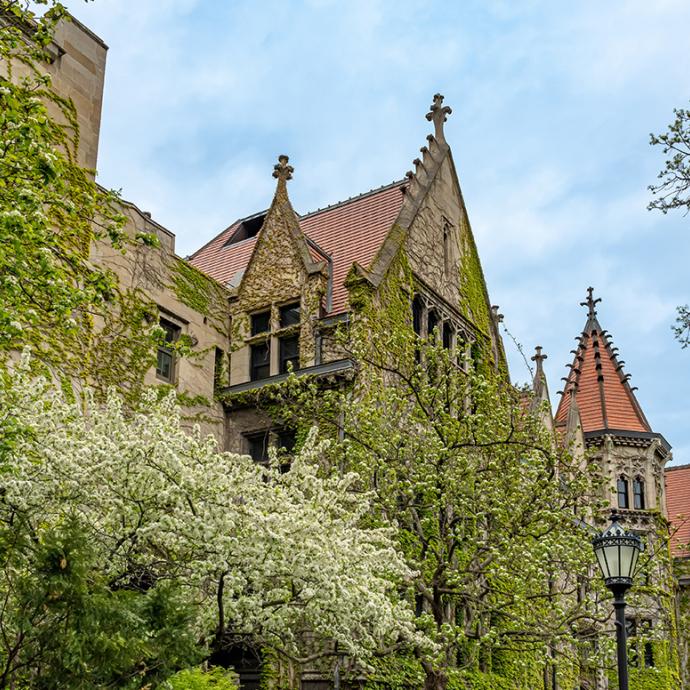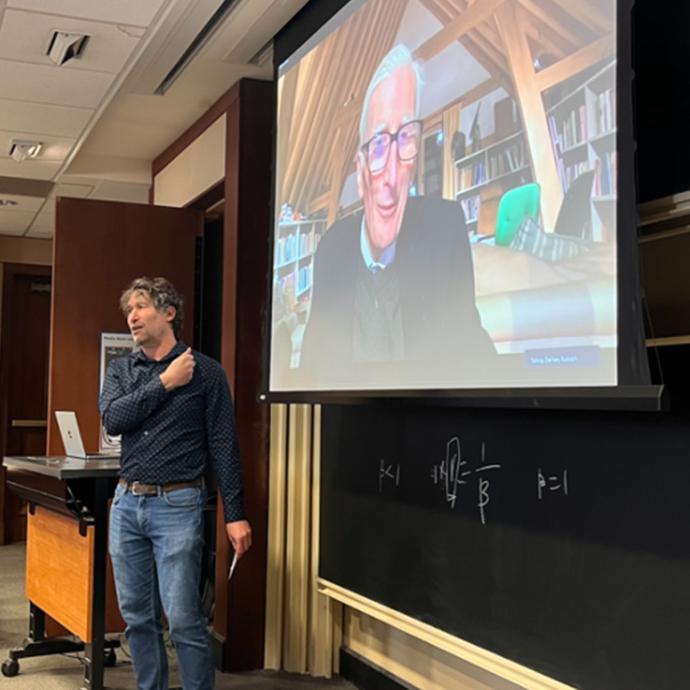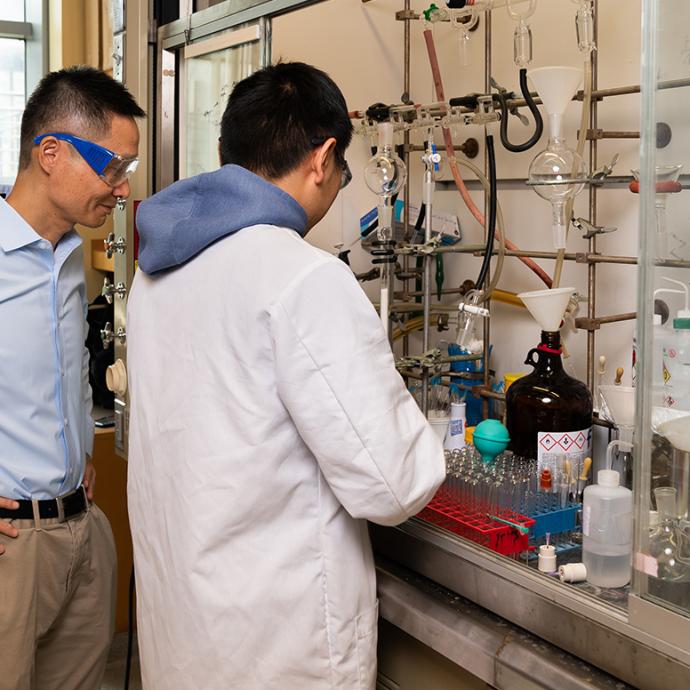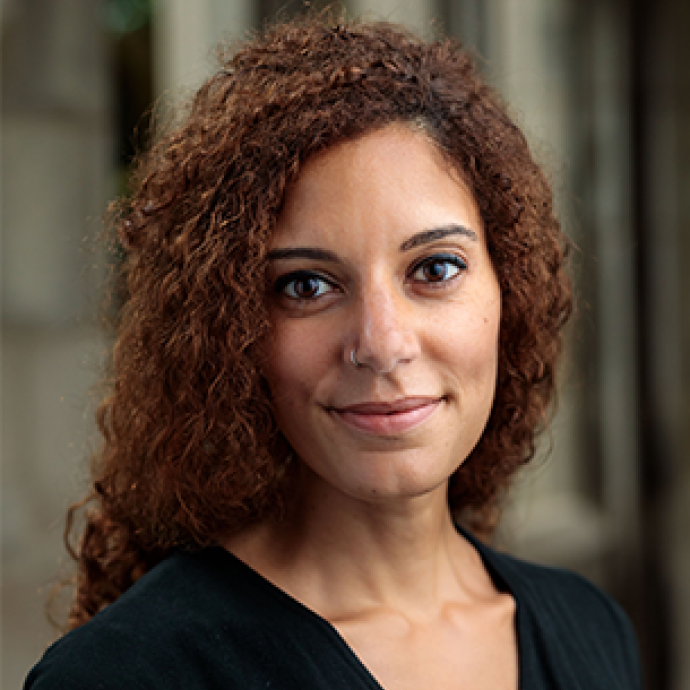Jack Steinberger, a Nobel Prize-winning scientist whose distinguished career in experimental physics began as a University of Chicago student, died Dec. 12 at the age of 99.
Steinberger, SB’42, PhD’49, was most famous for his co-discovery of a new type of ghostlike particle called the muon neutrino—a breakthrough that earned him, Leon Lederman and Melvin Schwartz the Nobel Prize in Physics in 1988. Steinberger studied the basic particles that make up the universe, and the elemental forces that govern their interactions, over a long scientific career that was jump-started by Enrico Fermi and other UChicago mentors; the discovery of the muon neutrino was only one achievement in decades of extraordinary contributions to physics.
After arriving in Chicago as a child in 1934 as a refugee from Nazi Germany, Steinberger attended New Trier Township High School. At first he took college classes at the University of Chicago in the evenings while helping with the family store on the weekends.
Shortly before he finished his undergraduate degree, Pearl Harbor was bombed and he enrolled in the Army. Steinberger was given an introductory course in electromagnetic wave theory through the University of Chicago and sent to the MIT radiation laboratory, where he helped develop bomb sights for aerial raids, he told the CERN Courier.
After the war, Steinberger rejoined the University of Chicago to pursue his Ph.D. At that time the department was filled with pioneering names in physics and chemistry, including Fermi, Edward Teller and Robert S. Mulliken, and many of the students who studied there would become legends in their own right.
“It was a wonderful atmosphere, both between professors and students and also among the students,” Steinberger recalled in his Nobel autobiography. “The courses of Fermi were gems of simplicity and clarity, and he made a great effort to help us become good physicists.”
Though Steinberger was initially interested in theoretical physics, Fermi encouraged him to pursue an experiment to test a theory Steinberger had proposed about cosmic rays. The nudge took; Steinberger would spend the vast majority of his career in experimental physics. “Fermi was the biggest luck I had in my life!” Steinberger told the CERN Courier.
Steinberger spent a year at the Institute for Advanced Study at Princeton and a year at the University of California Berkeley, where he made multiple experimental breakthroughs but left after refusing to sign an anti-Communist loyalty oath.
He then moved to Columbia University, where at nearby Brookhaven National Laboratory in the early ‘60s, he would undertake a landmark experiment to produce neutrinos—the “ghost” particles that zip through us undetected all the time, but had been difficult to study. In the stream of particles that he, Lederman and Schwartz produced, it became clear that there was not just one kind of neutrino; in addition to the expected particle, there was also one that was called the muon neutrino. The breakthrough also pointed the way toward new techniques to study the “weak force,” one of the four basic forces of nature, and is regarded as a fundamental pillar of the understanding of the basic particles that still stands today.
Prof. Jack Steinberger discusses his life and scientific career in this 2008 interview. (Video courtesy of Nobel Foundation)
In 1968, Steinberger joined the European Organization for Nuclear Research (CERN), where he would remain for the rest of his career. Among his accomplishments were serving as spokesperson for an electron-positron collider called LEP, which took crucial measurements that confirmed the Standard Model of the unified electro-weak and strong interactions.
“He was a remarkable scientist and person. His career and the work he did spanned much of the history of particle physics,” said Prof. Ed Blucher, who worked with Steinberger at CERN and kept in touch as a personal friend. “He had an uncanny ability to look at problems with great clarity, instantly understanding the key issues. This talent, combined with his deep knowledge of physics, led to five decades of groundbreaking experiments.”
J. Peter May, a professor of mathematics at UChicago, has fond memories of Steinberger, who was his cousin. He recalled that in 1955 Steinberger took him to a lecture at Brookhaven by Owen Chamberlain, another University of Chicago PhD and Nobel-winning physicist. “I was the only kid there, and it was a life-changing experience,” May said. “I knew right away that I wanted to be a part of the research world.”
May remembers Steinberger as “a scintillating man, wonderfully good-humored and unbelievably modest about all that he had achieved.” Well into his 80s, May said, Steinberger was still riding his bicycle to work at CERN from his home in Geneva.
Steinberger is survived by his second wife, Cynthia Alff; four children, Julia, John, Joseph and Richard; and four grandsons.










 —Prof. Chuan He
—Prof. Chuan He
